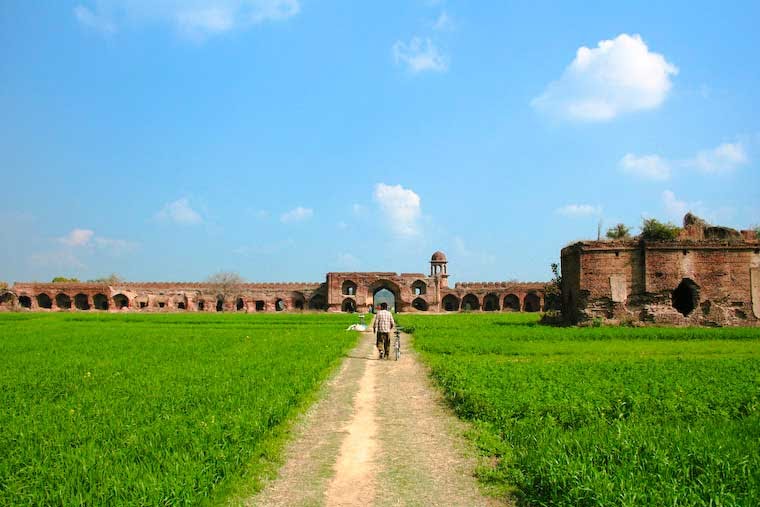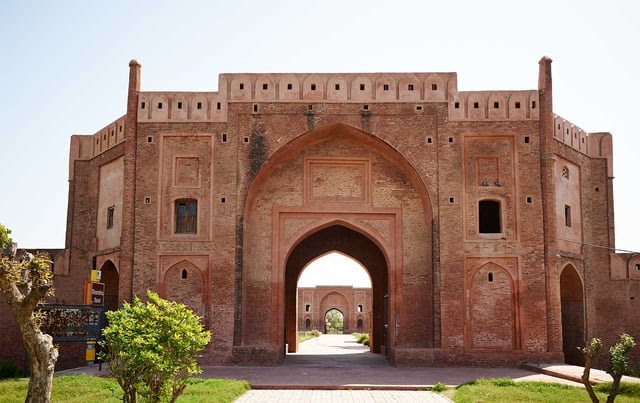

.jpeg)
.jpeg)
Nestled in the heart of Amritsar, Punjab, lies the Sarai Amanat Khan, a caravanserai commissioned by the renowned calligrapher Amanat Khan Shirazi in 1640. Shirazi, known for his work on the Taj Mahal, built the sarai to memorialize his brother Afzal Khan. The sarai enclosure is nearly square, measuring 168 m long and 165 m wide, with an octagonal bastion on each corner. The eastern and western sides feature monumental gateways, known as the Lahore Gate and Delhi Gate, adorned with colorful tiles in the spandrels of the entrance arches. The mosque, located in the southern half of the Sarai, was originally decorated with glazed tiles and has a facade of three arched openings. The Sarai also boasts a "boule," a fascinating, well-attached structure that adds to its architectural charm. Sarai Amanat Khan is one of the only four remaining serais in Punjab dating back to the Mughal period. Its beautiful arched gateways, exquisite tile work, and Persian inscriptions showcase the Mughal style of architecture. Designated as a monument of national importance under the "Ancient Monuments and Archaeological Sites and Remains Act 1958," Sarai Amanat Khan is a testament to Punjab's rich cultural heritage and the architectural brilliance of the Mughal era.